Pineapple sage is an aromatic plant with beautiful red flowers and lustrous green foliage. It is a semi-hard subshrub native to the Sierra Madre del Sur mountains of Mexico and Guatemala. It was introduced in the 1870s as an ornamental plant. Later on, we adopted it as a refreshing herb.
Pineapple sage is an Edible plant. You can consume its leaves as well as its beautiful red flowers. The leaves of pineapple sage have a sweet pineapple flavor. It has a fruity touch. The flowers actually taste a little bit tangy and citrusy with a hint of mint. Leaves and flowers collectively make a great blend for summer drinks, especially refreshing cocktails.
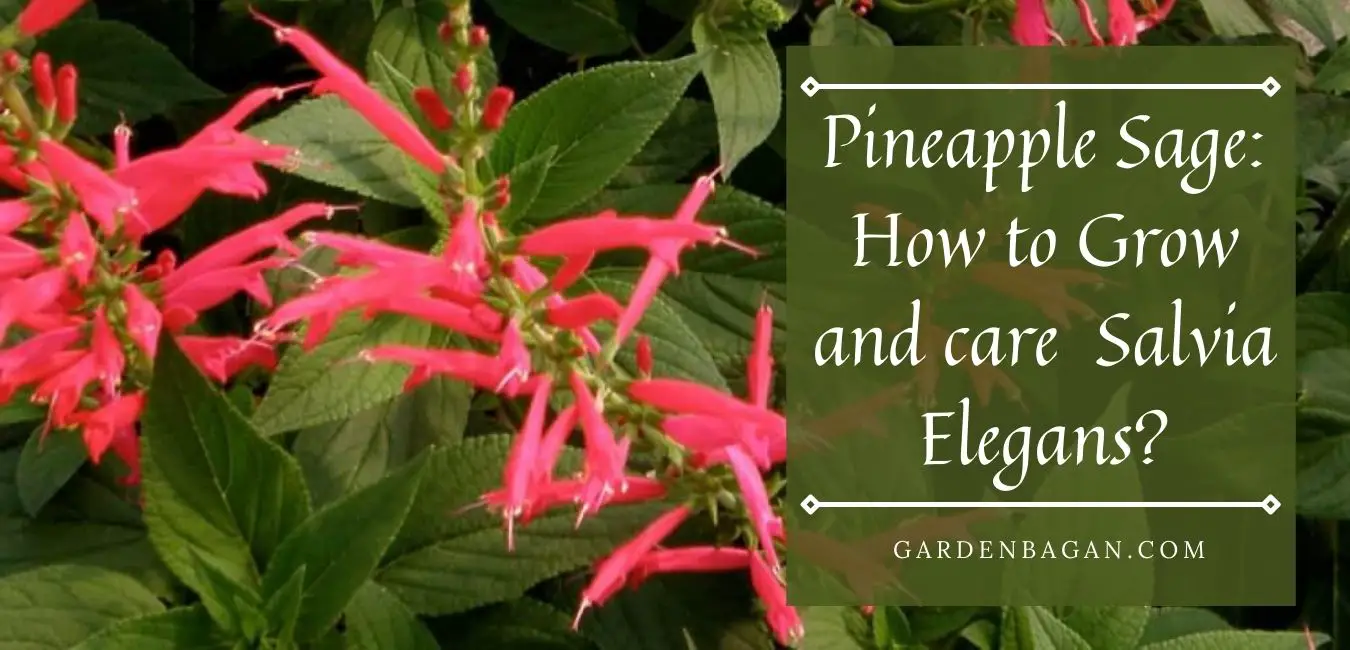
Introducing Pineapple Sage
| Common Name: | Pineapple Sage |
| Botanical name: | Salvia elegans |
| Family: | Lamiaceae (mint family) |
| Native Climate: | Mediterranean climate. Native to Sierra Madre del Sur mountains of Mexico and Guatemala. |
| Cultivar Introduction: | The pineapple sage was introduced in 1870 as an aromatic Ornamental Plant by USDA. |
| Cultivation Zone: | USDA Zone 8 to 11. |
| Plant Type: | Semi Hardwood, Sub-Shrub Plant. |
| Perineal or Annual: | Pineapple sage is Perrineal in USDA zone 8-11, elsewhere it is grown as an Annual ornamental plant. |
Pineapple sage is a semi-hard subshrub. It is native to Mexico and Guatemala. It can grow up to 3 to 4 feet and can cover a similar width. The mature stems are square, woody with soft green tips.
The leaves of pineapple sage grow in pairs of opposite sets. These leaves are light to dark green in color and a little ovated in the center and pointed at the tips. Each leaf can get 2-4 inches long. It is covered with fine, soft, short hairs on both surfaces. It looks fuzzy and really soft and spongy on touch. These leaves are edible and release a fruity fragrance with a pineapple taste on breaking.
The Pineapple sage flower is long tubular in shape. The color can vary from light pink to dark scarlet red. These flowers also release a sweet citrusy fragrance that attracts Hummingbirds and butterflies. The flowers of pineapple sage grow in spiral order from bottom to top.
You can easily identify these flowers from their hooded tops and extended lower lips. This structure helps the hummingbird and butterflies to feed on the nectar, in return pollinate the flower.
The mature fertilized flower leaves an oval seed at its base. The seed falls off within a week after maturing. You can collect these seeds to regrow a new pineapple sage plant.
Why Do we call it Pineapple Sage?
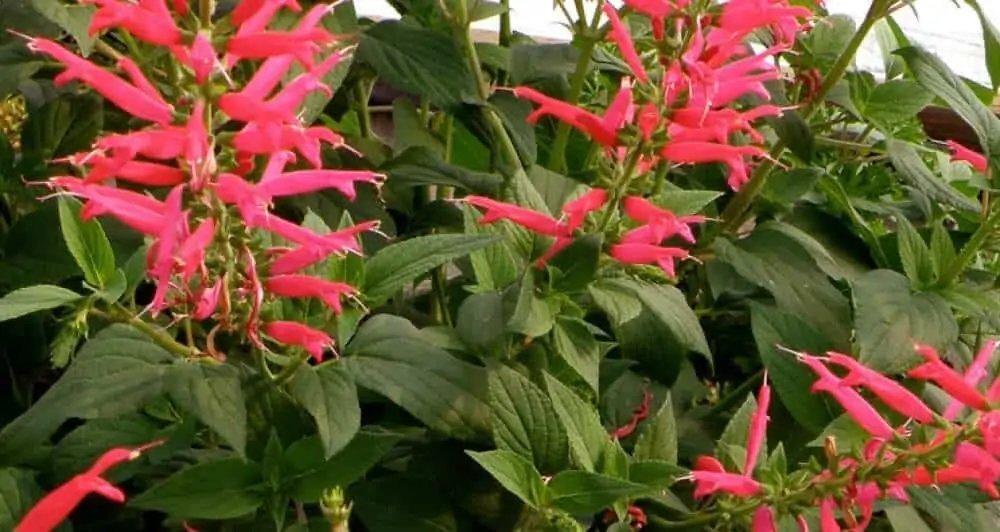
Pineapple sage gets its popular name from the sweet fruity pineapple fragrance. The leaves of salvia elegans release a pleasant sweet pineapple-like smell when crushed. The pineapple flavor and sweet fragrance make it popular among kitchen gardeners.
This sweet smell gives the plant its common name- Pineapple Sage.
Do you know? – Pineapple sage is an edible aromatic plant.
Is pineapple sage annual or perennial?
Pineapple sage is perennial in its native Meditteranean, Mexican climate. It is native to Mexico and Guatemala. Pineapple sage is perennial in USDA Zone 8 to 11.
In colder regions especially in the North, it is grown annually. Pineapple sage is a well-known annual decorative flowering plant in most of North America. Originally it was introduced as an Annual ornamental plant to attract pollinators.
It is a late fall bloomer. If you live in a frost-free zone then you can get lots of red flowers throughout winter. An old mature pineapple sage plant can sprout back on its own in spring even in a cold zone.
How to grow Pineapple sage?
The botanical name of pineapple sage is Salvia elegans. It is a member of Lamiaceae (mint family). Originally it was found in the Sierra Madre del Sur mountains of Mexico and Guatemala. USDA introduced this plant as an ornamental plant in 1870. It was introduced as a cultivar especially to attract pollinators and increase crop production.
Latter It becomes popular due to its distinct fragrance and fruity taste. Nowadays pineapple sage is grown as an ornamental plant as well as a spicy herb.
Do you wanna grow your own pineapple sage? Yes, then keep reading. I have shared my experiences, it will definitely help you too.
| Common Name: | Pineapple Sage (Salvia elegans) |
| Plant Size: | 3-5 feet high and 2-4 feet wide. |
| Soil Type: | Soft, Sandy Nutritious soil. |
| Soil Ph.: | 5.8Ph to 7.5 Ph. Pineapple sage is adaptable to acidic to slightly alkaline soil. Try to keep the soil Ph. below 7 for best blooming. |
| Temperature: | Pineapple sage is compatible with a Minimum of 20 degrees and a maximum of 35 Degree Celcius. Temperature above or below this range is not very suitable for pineapple sage plants. |
| Sunlight: | 3-4 hour Morning sun and afternoon partial shade is required for pineapple sage. |
| Watering: | Pineapple sage requires regular watering in the early days. The soil should be moist and well-drained especially in winter. |
| Propagation: | Pineapple sage is grown from seeds as well as from its cutting. Commercially plants grown from cuttings are preferred over seedlings. |
| Spacing: | Pineapple sage plant must be 2-3 feet (24-36 inches) apart from others. These plants should be grown side-by-side. Never plant them one after other in the direction of the sun. Grow only 1 plant in a 12-14 inch (15-20 gallon) container. |
Grow a pineapple sage in well-drained sandy soil rich in organic matter. Keep the plants well-spaced (2-3 feet) and away from each other. Don’t grow one pineapple sage in front of another in the direction f sun. The front plant can cover the next one and reduce its growth rate. Grow pineapple sage plant only from cuttings for faster and healthier growth.
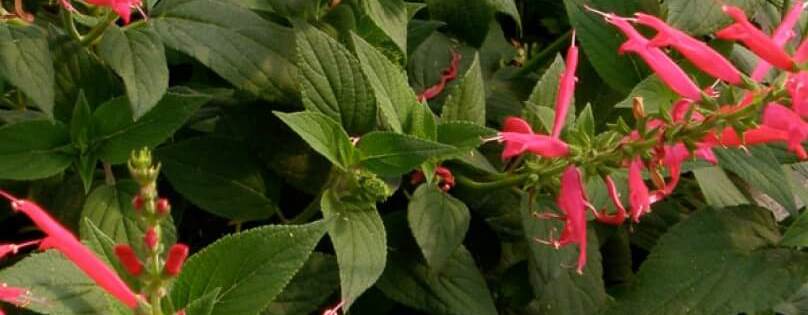
Prepare Soil for Pineapple sage plant
A pineapple sage plant requires good quality, well-drained nutritious soil. You can either use any commercial flower soil mix or make something of your own. I personally prefer the second way.
If you don’t want to spend money on commercial soil mix, just follow my steps and get a healthy soil mix for your pineapple sage plant.
- Start with your garden soil. Remove any debris, stones, wood piece, or anything that can infect the root system.
- Dry this soil in full sun for a couple of days. It will kill any grub or fungal spore present in the soil.
- Add an equal amount of River sand to make it light, loose, and well-drained. Commercially we use Perlite for this purpose. But River or construction sand is a cost-effective tool.
- Next, add 1/2 part coco peat and 1/2 organic compost to this mix. It will nourish the soil and feed the plant for a long duration.
- Add 1 spoon full of any contact fungicide and mix everything well.
- Your soil is ready to be used. You can now plant the pineapple sage in this soil mix and don’t forget to water well.
- Put some aged organic compost or kitchen waste in the bottom and top of this soil mix before and after plantation. This will slowly feed the plant and keep the soil hydrated. It will also reduce the need for frequent watering on hot summer days.
Special Tip: Don’t mix too much organic matter in the soil. Instead, put it in the bottom, fill the soil mix, and again make another layer in the top of the soil mix. The sandy soil mix will provide good drainage and the organic matter will release nutrients slowly with the water supply.
Too much organic matter near the root ball can cause waterlogging. It can lead to fungal attacks and rootrot. So be careful, a little trick can save you from lots of trouble.
Select Pineapple sage variety
A perfect pineapple sage variety can save you some extra bucks that you may spend for fertilizer, shade, and other necessities. There are dozens of Popular pineapple sage varieties available these days. You can choose anyone according to your need.
I would suggest selecting those varieties that are more friendly and adaptable to your local climate. It will bloom early and you can harvest lots of fresh leaves and flowers for your cocktails. You must check out the growth pattern, temperature and soil requirements, and bloom time for every variety before buying one for your garden.
Here is a list of Popular pineapple sage varieties to choose from…
- Frieda Dixon is an adaptable pineapple sage variety. It can be grown in the Nort region with little care. The plant can grow up to 3-4 feet. The flower of Frieda Dixon Pineapple sage has a light Salmon Pink Color instead of Red.
- GoldenDeliciou is a sweet, short, fragrant variety of Pineapple sage with Bright Red flowers. It can grow up to 3 feet.
- You can also choose Honey Melon variety, especially for Cold North Climate. It is an early bloomer and starts flowering in late summer. The honey Melon plant variety can grow up to 2-3 feet high.
- If you don’t experience heavy frost in winter then go for the Scarlet Pineapple variety. It is a bigger member of this group. The average plant size of scarlet pineapple sage is 4-5 feet with more flowers and bigger leaf sizes.
- Tangerine is another popular variety of pineapple sage for the North. It is an early bloomer and has a beautiful dark red flower. The plant size is quite small with smaller leaves. Still, it is very popular due to its citrus mint flavor.
Read this: How to Care for a Gomphrena Plant?
Can You grow Pineapple sage in Container?
Yes, you can easily grow a pineapple sage plant in a container. In fact, It is the best option for container herb gardeners.
Pineapple sage is a fast grower plant. The root system is very confined and doesn’t have any taproot especially if grown from cuttings.
You will need a 10-15 gallon or 10-12 inch container, grow bags, or pot to grow a pineapple sage.
Grow Pineapple Sage from seeds
You can easily grow a new pineapple sage plant from its seeds. Although pineapple sage grown from seeds are not commercial preferred cultivars.
The main reason behind this is the slow germination and growth rate of the seedlings. Also, the plant grown from seeds has a long taproot that requires large containers to accommodate.
Pineapple sage grown from seeds is bigger, taller, and stronger. They are more compatible with their surrounding environment. These plants can easily adjust and survive in cold climates.
One noticeable problem with seed-grown pineapple sage is the difference between the mother plant and its seedlings. The seedlings may develop into different varieties or hybrids due to cross-pollination.
Still, If you wanna grow Pineapple sage from seeds then follow the given steps.
- Collect some mature and healthy seeds from a mother plant. You can also buy pineapple sage seeds on Amazon.
- Soak the seeds in plain tap water for 6-8 hours or just let them soak overnight. Start this procedure 1 or 2 weeks before the last frost. An indoor garden or a greenhouse is an ideal place to grow pineapple sage seedlings.
- Rinse the seeds in the morning and wrap them in a wet paper towel or any damp cloth.
- Let the seeds in a well-lit place for a couple of days. The environment should not be too cold or excessively hot.
- After 2-3 days put these seeds into suitable germination media. You can use Cocopeat for germinating these seeds.
- New Seedlings will emerge within 2 weeks. Let it stable inside for couple more weeks. The seedlings must develop enough roots to survive outside the climate.
- Wait for the night temperature to increase above 18 degrees celsius to transplant the seedlings.
Grow Pineapple sage from Cuttings
Pineapple sage cuttings are really easy to grow. You can easily root these cutting in plain tap water or any growing media with little rooting powder.
Pineapple sage grown from cutting will mature and bloom early before fall. You can start collecting cutting in early spring. Always choose the best healthy plants to collect the cutting.
- Choose a mother plant. Collect only the top green soft stems without any flowers or buds. Soft green stems will develop roots faster than hard woody stems with flower buds.
- Remove a couple of leaves from the base of the cutting. It will allow more water or growing media to contact the stem surface.
- Put the stems in 2-3 inches of clean water. Always replace the water every 3-4 days. Keep the stems near a window where they can get partial sunlight.
- You can also grow these stem cuttings in any suitable soft-growing media. Just dip the lower end of the stem in water and put some rooting hormone over it.
- Next place the stems in the growing media. Put this media in partial shade.
- Never let it dry completely. Try to keep the growing media moist but not soggy.
- The new root should start growing within 2-3 weeks. but wait for another 2 weeks before transplant.
- Remember Pineapplesage developed from cutting will not have any main taproot. So you will require a much smaller container to grow the plants.
Water and Fertilizer Requirements for Pineapple sage plant
Always keep the soil moist especially in the early days of plant growth. Once the pineapple sage is mature and old, you can reduce the watering with an interval of just once or twice every week.
Let the topsoil dry before applying the next round of watering. Watering must be reduced to half just before fall. This will force the plant to acclimatize the plant with the upcoming winter. heavy watering during winter can cause frostbite in the root system. It can easily kill the plant, so keep the soil well-drained.
You should feed the pineapple sage with balance NPK 14:14:14 or NPK 19:19:19 once in 15 days. Also, add organic mulch or well-aged dry compost to the topsoil. This will prevent water loss during hot summer days and release nutrients with subsequent watering.
Fertilization must be followed by a proper watering cycle. It will help the nutrient to be absorbed in the soil.
Caring a Pineapple sage
- Prune back the pineapple sage plant to its half in early spring. Once the first few branches appear pinch off the tips to encourage bushier growth.
- Fertilize the plants with organic and inorganic chemical fertilizer after hard pruning.
- Water twice every week after pruning. Adjust watering according to the outdoor temperature. Increase watering if the soil feels too dry and reduce if it feels soggy.
- Remove any weed or grass around the pineapple sage plant base. It can feed on the nutrients given to the plant itself.
- Don’t forget to add organic much. Light 1 or 2 inch cover especially with compost is very effective in healthier growth.
- Harvest the leaves and flowers regularly to increase new branching. harvesting once or twice every week is a healthy habit.
- Pineapple sage is prone to aphids, spider mites, and mealybugs especially if grown indoors. So Spray the plant with neem oil or soapy water to treat these pests and insects.
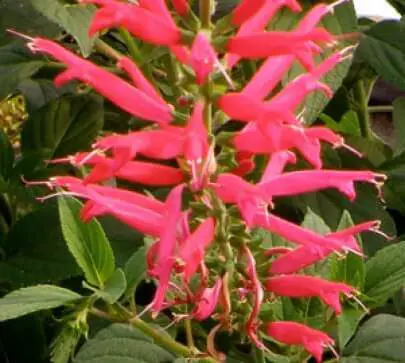
Harvesting time and techniques
- Early morning hours are the best time to harvest leaves and flowers from pineapple sage.
- Pineapple sage is mostly used fresh. So harvest only when you need it.
- Don’t forget to water the plants after harvesting leaves or flowers.
- Always leave a few flowers and leaves in each branch to help it grow back. It can die if you remove all of the leaves at once.
- Don’t use any pesticide especially if you use the leaves for cooking. Chemical pesticides are harmful to your health.
Final Words
That’s it! I hope you can now grow pineapple sage on your own. If you already have one then please share your experience with our readers. Which Pineapple sage variety do you like? Write down your thoughts, ideas, or any queries in the comment section.
Keep Reading and Keep gardening!
Reference: https://hort.extension.wisc.edu/articles/pineapple-sage-salvia-elegan

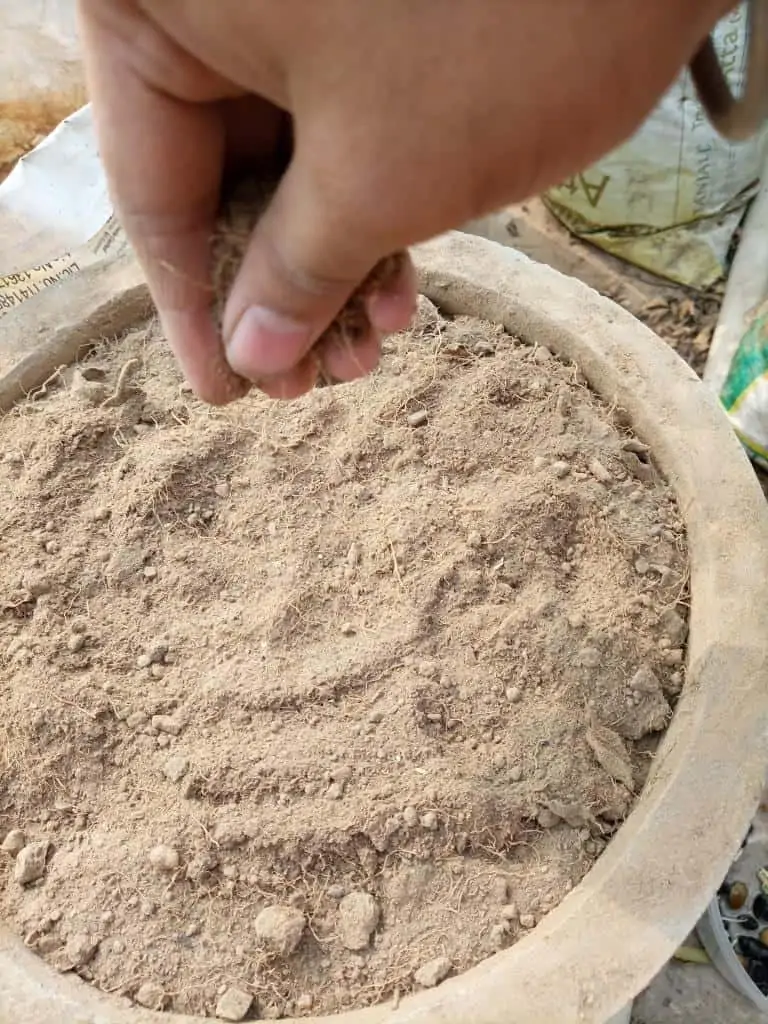
my name is denise and i would like to know if you can help me please i just moved into my new home 2mths ago with my partner and my pet dog and i am over run with red ants in my garden and i cant let my grandchildren play in there as they bite you is there anything i can do please
Hi Denise, Red ants are not the actual problem in your garden. The problem is with the source that attracts these ants. No matter how hard you try, you can’t get rid of these insects unless the source is there. First of all, try to find the source of this problem. most probably it is some kind of food source that attracts ants. If your garden is infested with mealybugs or aphids then it can be the source. Simply flood the infected area with water and spray the plant with soap water mixed with edible oil every alternate morning. keep the plants dry at night. Your problem will be fixed in a couple of weeks.
I have a pineapple sage plant that has grown beautifully but I do not have any flowers yet, when do these plants start to flower?
Wait for couple more weeks. They will definitely bloom, only make sure they get enough sunlight, water, and nutrients for proper flowering. Meanwhile, you can do some final pinching for a bushier plant look. You can also use some plant growth promoters but it is not necessary.